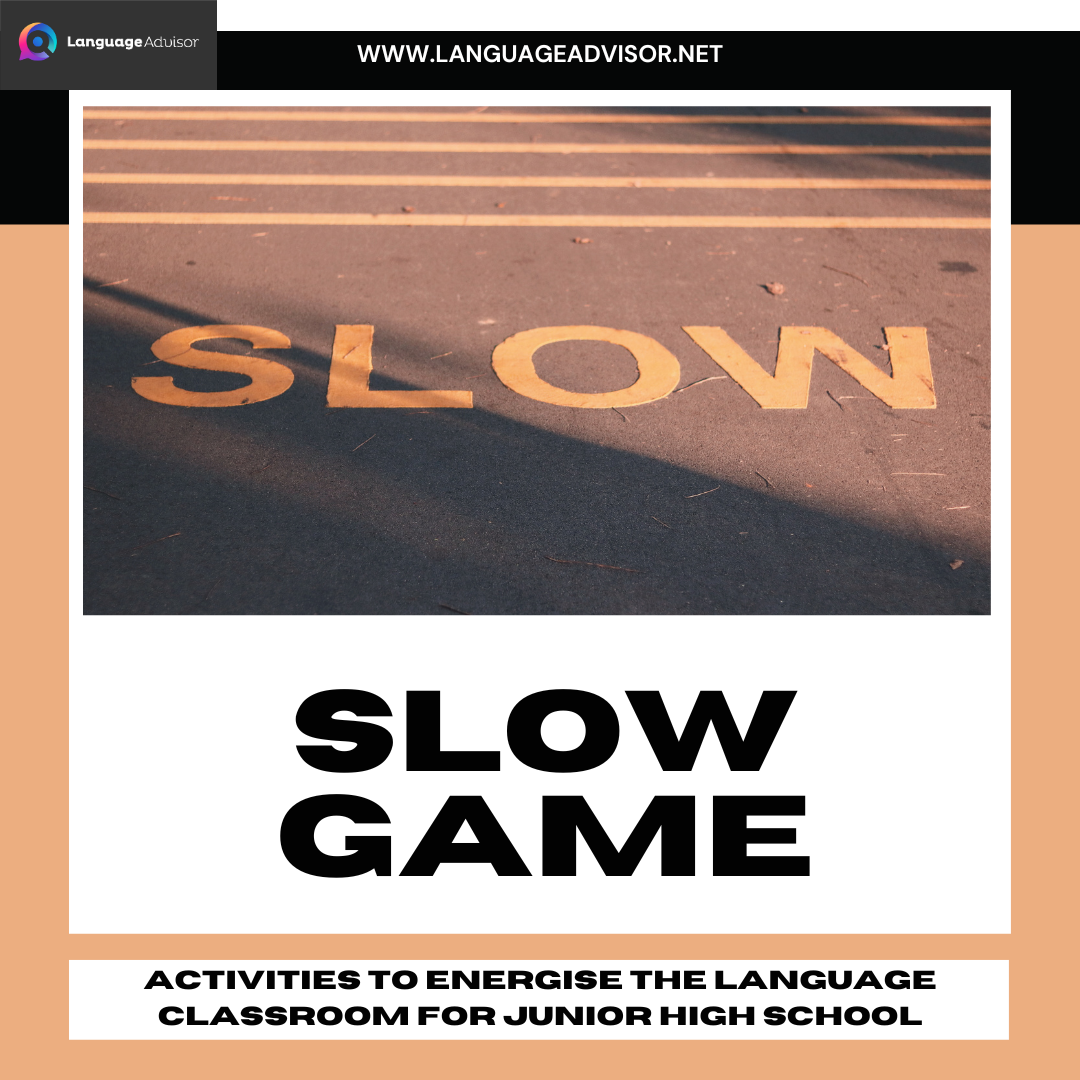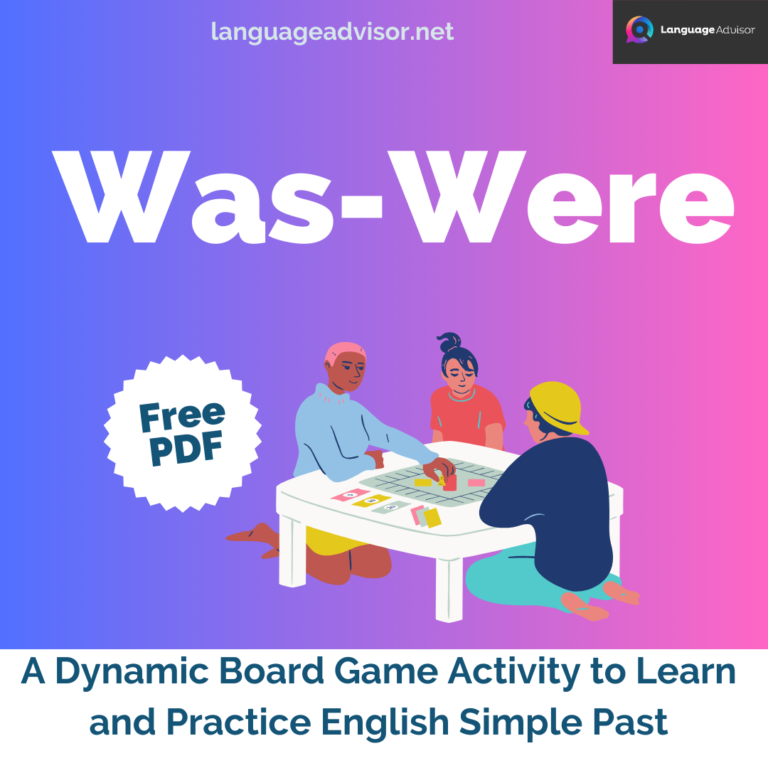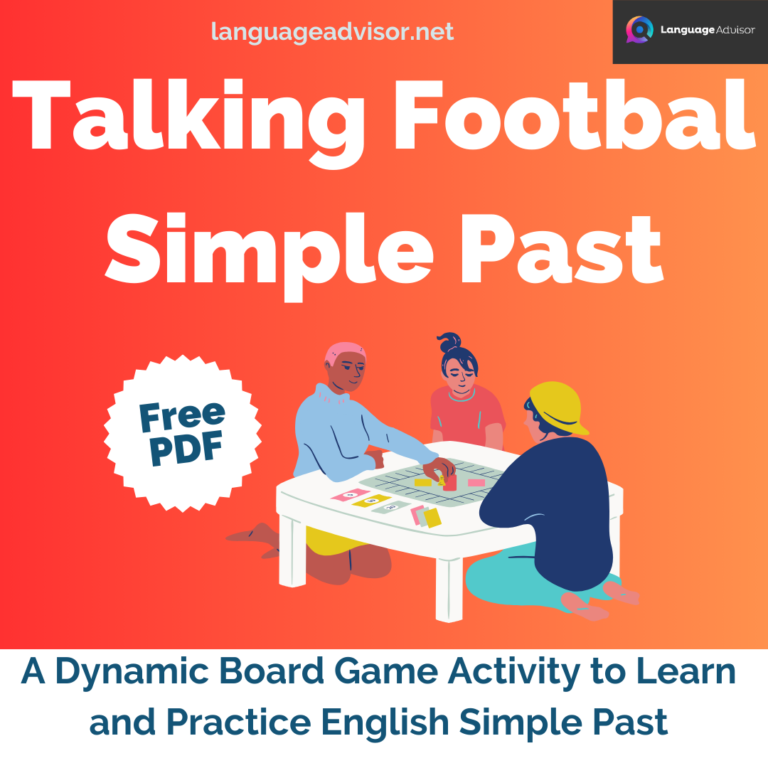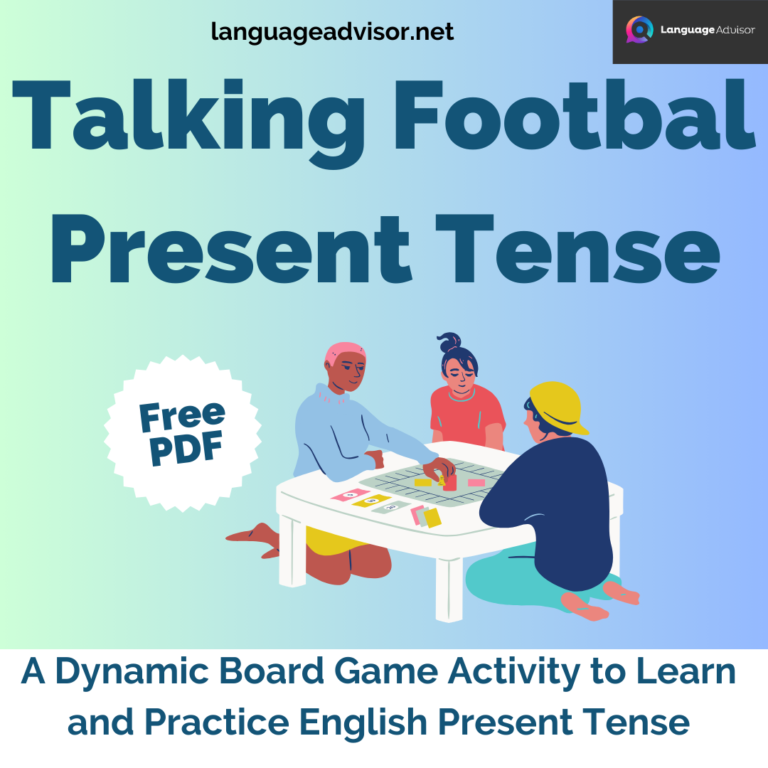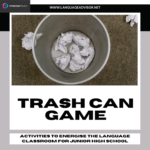SLOW GAME. Games and Activities to Energise the Language Classroom for Junior High School
SLOW GAME

Energising Language Classroom Activities for Junior High School: A Teacher’s Guide
Junior high school students often find language classes challenging, but as a language teacher, you have the power to transform these challenges into engaging learning experiences. Classroom activities are the key to achieving this transformation. These activities not only make learning enjoyable but also foster a deeper understanding of the language, leading to improved fluency and proficiency. In this blog post, we will explore a diverse range of innovative and interactive language classroom activities designed specifically for junior high school students. Whether you’re looking to enhance vocabulary retention, boost conversational skills, or make grammar lessons more enjoyable, this guide will provide you with a rich array of strategies to create a dynamic and effective learning environment for your students. Let’s embark on this journey to energize your language classroom and inspire your students to become passionate language learners.





SLOW GAME
Target Group: All grades
Difficulty Level: Fundamentals
Activity Objective: To practice word categories and/or sentence building
SLOW GAME – Procedure
- The purpose of this activity is to build vocabulary and increase awareness of word categories and sentence structure, should you choose to focus on that aspect.
- Before starting, ensure that students are familiar with the vocabulary/grammar by teaching or reviewing it.
- Hand out Worksheets that contain the vocabulary being studied in Japanese only, clearly divided by category. Each word should have a box or line for students to write the English translation. Allow them a few minutes to fill in the English words. The use of a dictionary is at your discretion.
- Once the worksheet is completed, it serves as a template for the game.
- Divide the students into groups and provide one deck of Vocabulary Cards per group. The number of students per group can ideally match the number of categories, but it’s not mandatory. Each Vocabulary Card deck should have one card per vocabulary word only.
- Ask students to shuffle the cards and deal them out to everyone in the group evenly and face down. The number of cards each student receives should match the number of words per category, usually around 5.
- Each student should have the same number of cards and a mix of Vocabulary Categories.
- The next step is for each student to discard one card, passing it to the person on their left. Everyone discards simultaneously or at least until everyone has discarded. The goal is to accumulate all the words from any given category, referring to their Worksheets.
- When someone accumulates a full category, they stop the game by shouting “SLOW!” and show everyone their cards. If it is indeed a full category, that student wins the round.
- Losers have to mark down a letter, Hangman style, using the word “S-L-O-W.” So the first time they lose, they write “S,” the second time “L,” and so on, until they completely spell out “SLOW.”
- You can end the game at any time to check who has no “SLOW” letters or who has completely spelled it out. Alternatively, you can prolong the game by making it so that students have to play until only one student per group hasn’t completely spelled out “SLOW” and is the ultimate winner, although this might take a considerable amount of time.
Materials and Preparation
Create Vocabulary playing cards and Worksheets. Make sure to use a paper for the cards that the students will not be able to see through from the back. Worksheets are used to review vocabulary and as a reference during the game. Cards are used to play the game and collect groups of categorized vocabulary.
Suggestions and Advice
Given that all prep work is completed properly and all activities are clearly explained and executed this game really should run quite smoothly. The activity can even be used for Elementary School students by, for example, keeping the categories to nouns only; Colors, Foods, Animals, Days, Months, Sports etc.
For speaking and listening practice, the winners can read out what cards they collected and say what the category is. There are many ways to make the difficulty level higher. One example is to have the students collect whatever words will build a sentence rather than complete their category. The first student to complete a sentence needs to read the sentence out loud. If you have some funny or quirky vocabulary in the mix you might get some really funny sentences.





Energising Language Classroom Activities for Junior High School
In the world of language teaching, fostering a love for learning and effective communication is our ultimate goal. By implementing these engaging classroom activities for junior high school students, you are not only enhancing their language skills but also creating an environment where curiosity, creativity, and enthusiasm thrive. As we wrap up our exploration of these energizing language activities, remember that your role as a teacher is invaluable, and your dedication to making language learning exciting and impactful is what sets the stage for your students’ future success.
So, continue to innovate, adapt, and personalize these activities to suit the unique needs and interests of your students. Watch as their confidence soars, their vocabulary expands, and their ability to communicate fluently grows. With your guidance and these engaging activities in your teaching toolbox, you are well on your way to inspiring a new generation of confident and capable language learners. The journey to language proficiency may be challenging, but with your passion and these activities, it is always an exciting one.
Happy teaching!





Also check out these articles on teaching, teaching methods and teaching tools






